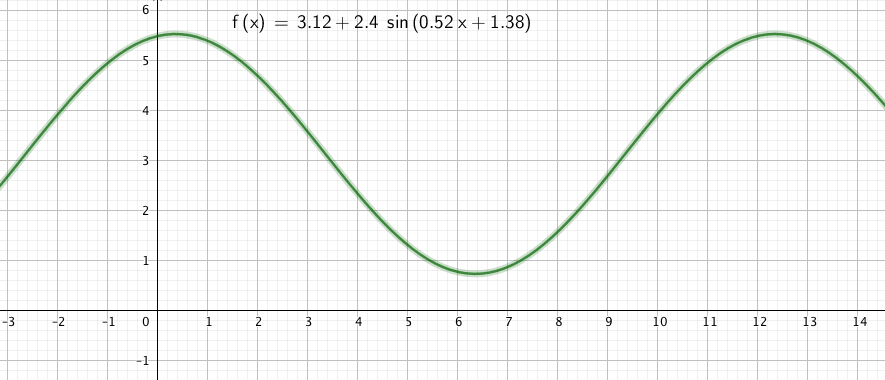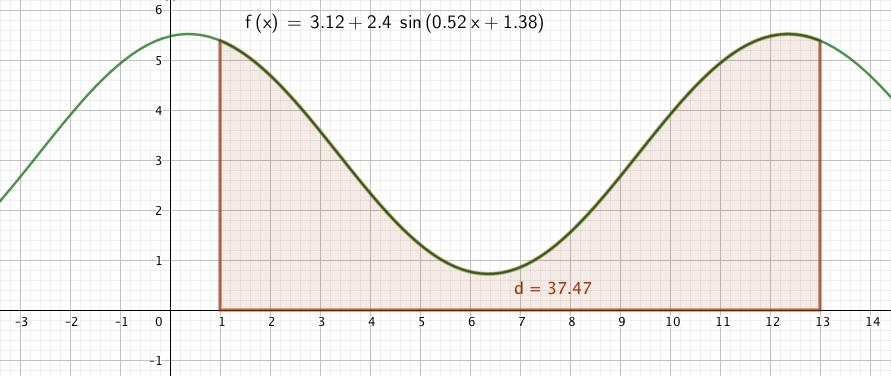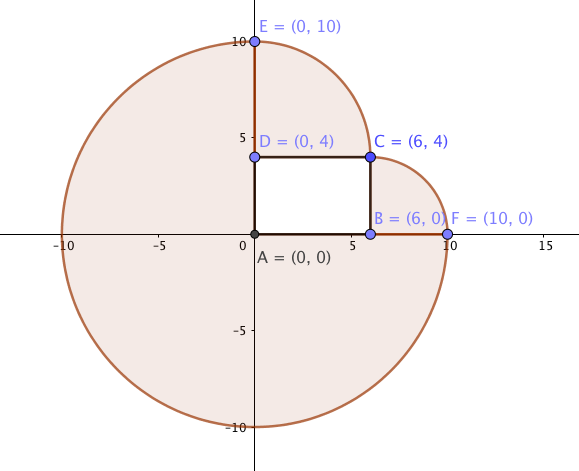It has been WAY too long since I posted. Energy has been scattered in a number of directions lately…
Yesterday in AP Calculus BC their sixth problem set of the year was due. I heard quite a bit of debate among my young scholars about one question in particular. Here it is:

I wish I remembered where I found this problem. I know I have used it in the past but I do not remember much debate about it. A little background about how I approach these problem sets before I relate the conversation we had. We are on a seven day class rotation in our new schedule. This rotation sometimes even includes two weekends. I assign a problem set the first day we meet on each rotation and it is due the first day of the next rotation. My students have time to wrestle with these problems, to ask each other questions, ask me questions, look up ideas/clues/data/etc. These are sets of ten problems and they only count ten points. All of the problem sets together count about as much as one test in a term. By the time the term is up, each problem set will end up weighing about 2 – 3% of a term grade. I grade them pretty easily, looking mostly for thoughtful process and I am willing to deal with half points which feels a bit silly but it honors thoughtful work rather than whacking them for some little mistake. Anyway, the point here is that these should be low stress and they should encourage collaborative thought and work. I have been clear that I encourage them to think together. Anyway, when they came into class yesterday there were a flood of questions for each other about fine points of interpretation for this problem and students were asking me about two distinct interpretations of part b of the problem. I loved the debate, I just wish it had been happening more than 2 minutes before the work was due. The primary debate was whether to answer part b by interpreting the year as the interval from 0 to 12 or whether to interpret it as 1 to 13. Our friend GeoGebra helped us a bit. Three screen shots below: 
Now, the curve with the integral from 0 to 12 highlighted: 
Finally, the curve with the integral from 1 to 13 highlighted: 
Nice, right? The area is the same according to GeoGebra. What followed was such a highlight of my day. Intense debate about why these seem to be the same. One student notes that the obnoxious coefficient for x in the function yields a period of essentially 12. Not a surprise, right? Nice observation. A nice debate about the limits. Is 1 the end of January or the beginning? I feel it needs to be the end of the month the way the problem is written, so I came down on the side of 1 to 12 as the proper integral. An observation about the symmetry of right Riemann sums where some months have overlaps and others have underestimates. Another nice observation. One student questions this model because he notes, as a northern city, Seattle should have more rain in the warmer weather months rather than have this mediterranean rainfall pattern. Wow. I pointed out that I know people who lived in Seattle and have visited there and that this is indicative of what I know about the area. I do not think that this would have ever occurred to me! A debate about whether we simply want to add f(1) + f(2) + f(3) + … + f(12) rather than integrate. One student mentions that he looked up the yearly rainfall in the Seattle area and the answer he found was pretty close to our integral. Good golly, that made me happy. A student questioned whether I wanted two answers to part a. I admitted that the word extreme, in this context, only made me think of a Maximum. I admitted that I should have been more careful than to make that assumption and I should include the minimum in the answer to part a as well.
We have a test today, so I pivoted the class conversation toward some practice problems but I felt that there was probably still more to discuss about this problem. Days like yesterday remind me of how spoiled I am that I get to do math with a group of scholars that are willing to engage in energetic debate about math. They are rarely interested in just knowing the answer, they seem to genuinely enjoy to process that gets them there. I am not going to pretend that all 15 students were actively engaged joining in with their ideas. I will say that there were all at least attentive and willing to let the conversation flow without pointing out, anxiously, that we need to talk about the upcoming test.
We decided a number of years ago to teach BC as a second year Calculus course at our school. We know that many of our students can accelerate through the BC curriculum in one fast year or by buying some Precalculus Honors time, but conversations like this one would be hard (not impossible) to find time for. Every year I hear a scholar say something along the lines of ‘I knew how to do this before but now I think I know why it works.’ Statements like that one, and conversations like yesterday’s make me feel good about this curriculum decision we made.





